How To Work As A Disney Animator
How to Get a Job in Blitheness at Walt Disney Studios
At WonderCon 2015, Disney recruiters give tips on how to land a job as an animator at Walt Disney Animation Studios and Disney Boob tube Animation.
At WonderCon this weekend, I had a fun fourth dimension covering the Walt Disney Animation Studios and Disney Television receiver Animation: Careers at Disney Animation panel with Camille Eden (Manager, Recruitment), Matt Roberts (Artistic Recruiter), and Brooke Keesling (Director, Talent Evolution) who shared some of the different creative roles that help make animated films and television shows. The word was moderated by Disney animator Darrin Butters, who worked on Big Hero 6 and Frozen , and offered a behind-the-scenes look at this amazing art form. The panel began with a short screening showcasing Disney Studios' nearly popular film and idiot box animation and ended with an audience Q&A.
The panelists talked about the unlike approaches of each studio; what it'southward like working within a vertical studio where everything is done in-house; the development process in the studio pipeline; the collaborative, fast-paced, and fun working surroundings; how art and technology are combined; how everyone working at Disney contributes to the process; the importance of staying truthful to the vision of the unabridged organization; why they desire applicants with a strong sense of appeal, aesthetics, and storytelling; their preparation programme and internship opportunities; what they wait for in an applicant'due south portfolio; the best entry-level positions for contempo higher grads; and the importance of peer back up and honest feedback.
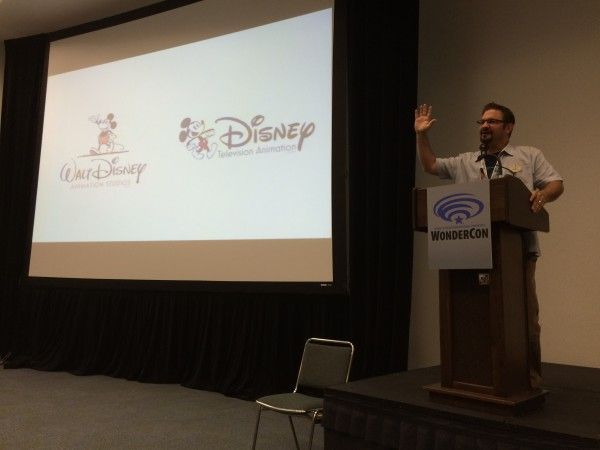
Hither are fifteen important things to know if you're interested in pursuing a career in Animation at Walt Disney Studios:
- Disney Television Animation is a fast-paced surround and usually has about 12 series in diverse stages of production at any given time. They are creator-driven shows. New people who want to exist creators come and pitch ideas. If approved, they brand pilots and DTVA decides which ones will be green lit to a new series. They as well accept heritage properties that take ideas from existing belongings in the Disney legacy.
- At Disney Television Blitheness, the show creators are at the captain and bring their vision to the tabular array, just they aren't necessarily the directors of their own shows. Because at that place are then many shows going on at any given time, the prove creator oversees all of that, merely there volition be different directors.
- Walt Disney Animation Studios is more than director driven. They make one film a yr. They're currently working on their 55 th motion picture, They also have a shorts program and special projects. Their content is home grown and their writers are part of the studio. You have to exist at director condition to pitch a flick.
- Walt Disney Animation Studios has three important standards, which are to tell compelling stories, create believable worlds, and highly-seasoned characters. Everything begins and ends with story.
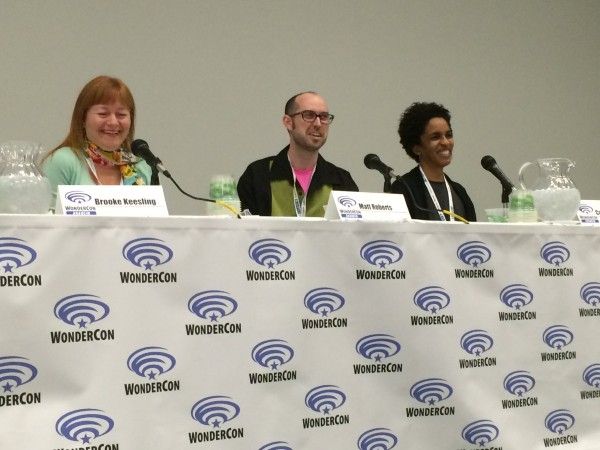
Photo via Sheila Roberts - The filmmaking process is divided between fourteen departments in three large areas: development, element production, and shot production. They are a vertical studio meaning everything is washed in-house. Information technology's a very collaborative environment and their departments piece of work together constantly throughout the process.
- At Disney Animation, art and technology are combined and piece of work together. The studio has technology specialists who work for the entire pipeline.
- Walt Disney Animation Studios has a team of visual development artists, whereas Disney Boob tube Animation looks for very specific roles such every bit the fine art managing director, background designer, background painter and colour stylist.
- Story artists at Walt Disney Animation Studio piece of work very roughly and gesturally because they're doing a lot of iterations of a lot of the aforementioned shots and scenes over and over as the film develops. In Television receiver Animation, the story and revisions are tighter.
- Disney doesn't tend to rent a lot of writers for Telly animation because about of their shows are storyboard-driven and the storyboard artists are doing the writing.
- Working at Disney Animation is fun, fast-paced, and the artists become along really well and feed each other'south creative juices. Yous get to work with your peers and learn from each other. Anybody is there to make the best possible film.
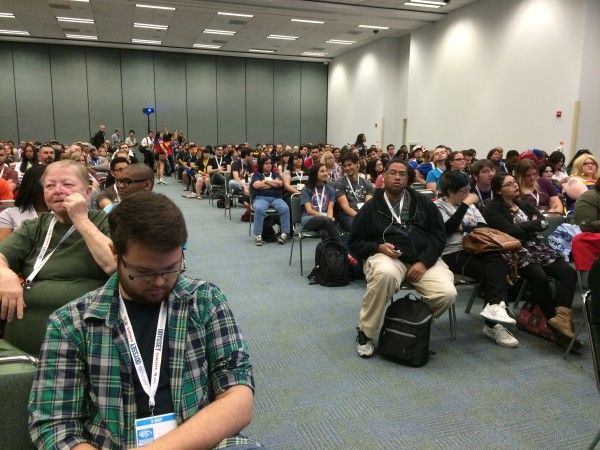
Photo via Sheila Roberts - If you're applying for an entry-level position, your portfolio should reveal your power to tell a story such as a pupil movie, graphic novel or comic yous've created. The studio is looking for potent draftsmanship, an ability to do a variety of styles, and that you are observing from life and non simply drawing from other designs.
- A storyboard revisionist, who cleans up the storyboard drawings of a seasoned storyboard artist, is a good entry level job. If Disney Television Animation likes your storytelling ability, they'll send you a storyboard test to consider your potential.
- Walt Disney Blitheness Studios has a film development training program for story artists which happens twice a year. The disciplines vary depending on the studios' needs. It'southward a iii-month to one-twelvemonth-long paid mentorship where you're paired with a resident Disney artist. (Go to DTVATALENT@DISNEY.COM and DISNEYANIMATION.COM/CAREERS for more information)
- At a big studio similar Disney, you tend to get hired for i specific affair. It'due south skillful to have one specialty, like a major that focuses on story, only and then also have a minor that focuses, for example, on character design. Versatility in both worlds makes yous more marketable to the industry in general.
- Information technology's a cool fourth dimension to be trying to get into the animation manufacture because you take the resources of the globe at your fingertips today. Environment yourself with a strong group of artists who you respect that aren't necessarily just going to tell you what you lot want to hear and are going to challenge yous and give you honest feedback.
Bank check out a full transcript of the panel below.
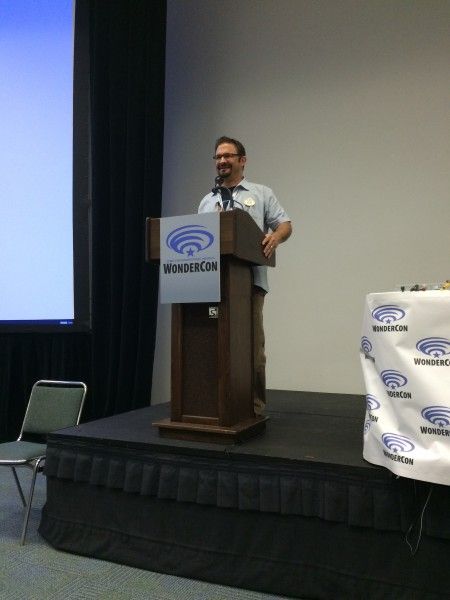
Moderator DARRIN BUTTERS: Let's start by introducing ourselves.
BROOKE KEESLING: I'm the Manager of Animation Talent Development for Disney Television set Blitheness. TV is a really fast-paced environs where nosotros have commonly about 12 series in various stages of production at whatsoever given time. Our main matter is creator-driven shows. Gravity Falls was created past Alex Hirsch. He is the creator of that show. He's the person who brings the vision to the table. Nosotros've got Penn Aught and Star vs. the Forces of Evil. That's Daron Nefcy's show. She brings the vision to the table for that evidence. Nosotros've got a few shows coming up including Future-Worm! and Pickle and Peanut will exist coming out before long. They're actually funny. Our main thing is our creator-driven shows, but then nosotros also take heritage properties, which ways we can take ideas from whatsoever existing property in the Disney legacy, like the Mickey shorts. Paul Rudish is the person that's at the helm of the Mickey shorts. He's had a long career in blitheness. He took what anybody loves about Mickey and thought about how to freshen it upwards while staying true to who his graphic symbol is. Nosotros have a very fast schedule. We're always making more than ane episode at any given time. We besides are making pilots. So, nosotros accept new people who want to be creators of our next backdrop and they come and they pitch ideas to u.s.a.. And then, we make pilots and we decide which ane of those pilots we want to light-green light to a new serial. That'due south Disney TV Animation.
CAMILLE EDEN: I manage recruitment at Walt Disney Animation Studios. One of the ways that we're dissimilar from Television Animation is that we brand 1 film a year, and on top of that, we have a shorts plan. Terminal yr'southward curt, Feast, actually won the Academy Laurels. Nosotros take special projects as well at the studios. All of that combined is some of the piece of work that we do at Walt Disney Animation. Our content is dwelling house grown. It's all original in the studio. Our writers are function of the studio at Walt Disney.
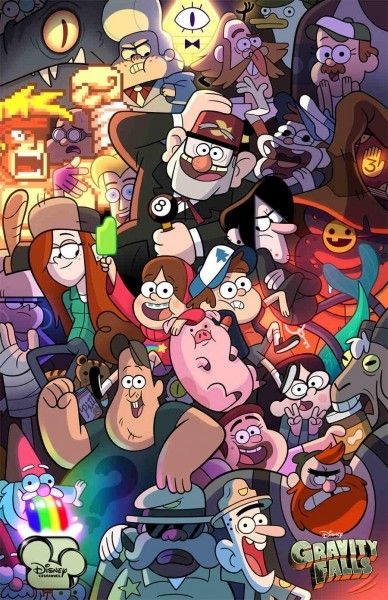
MATT ROBERTS: I handle all the front end creative roles like animation, visual evolution, story and modeling. Nosotros are more director driven, with the exception of our shorts program. If you're pitching a picture show in our studio, you have to be at manager status. No matter who our director is or what the film is, we try to hold any film we make to 3 very of import standards, which is to tell compelling stories, create conceivable worlds, and too create appealing characters. These are iii truths that y'all should hopefully find in whatsoever film, whether it's a short, special projects, or a feature that comes from us.
Can nosotros talk about the differences in the creative roles of the studio?
ROBERTS: With Walt Disney Animation Studios, our filmmaking process is divvied upwardly between fourteen departments which are in 3 big areas: development, element production, and shot production. I'll kickoff with development. We're a vertical studio which is an obscure way of saying everything is done in-house for u.s.. That'southward from story all the way through lighting and editorial in the back. We're a very collaborative environment. We're not really a linear pipeline where one department does something, and so throws the work over the debate for the next department to accept care of it. We try to work in more of a round fashion where anybody is upfront problem solving together to brand sure that we're going to have a really make clean, polish pipeline and that anybody is in it together. Every bit far as creative roles within evolution, everything really begins with story. Story is actually being driven by the director, the caput of story, and the screenwriter. But, in the story room, it's the three of them working with entire story staff, which is all our artists working together to problem solve and create the worlds, mankind out the characters, and make sure we have a actually entertaining motion-picture show. Also, we have a career path that I don't think a lot of people know of, but we've got a development team which usually has a groundwork in writing. They work with the director upwardly front, too, to help him spell out the worlds and mankind out the story before they're greenish lit and go into production.
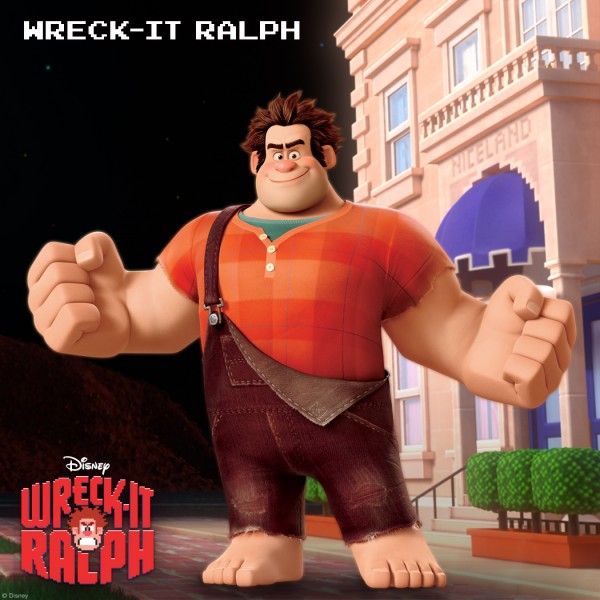
On top of story in the forepart, we as well accept visual development which are the artists that are doing all the pretty arts that yous run across in the 'art of' books whenever a moving-picture show comes out. They're like dual ends. They become to do the really fun, exploratory stuff up forepart, which is helping the managing director visualize ideas. But then, they as well have a real technical attribute to their job where they have to do really technical paintings or drawing turnarounds to spell out what the avails need to look similar further on in the CG production.
EDEN: Next up is asset production. That's where a lot of the characters and environments are created. So, we'll have modeling and rigging. Information technology'southward a collaborative environment. These departments work together constantly throughout the process and they team up. At some studios, yous might have it where you lot handle an asset and then you hand information technology on to the next group. At Walt Disney Animation Studios, our departments work closely together throughout the entire moving picture. And then, in one case they're worked through asset production, then they get into actual shot production where things come in like effects and lighting, where you take the scene and you light it. It goes all the mode through stereo. All of that happens in the back cease. Over again, that collaboration can go from the forepart of the pipeline to the dorsum and the dorsum to the front end, just our teams are constantly working together. Some other area which is unique to Disney Animation Studios is that the art and engineering science are combined. We work constantly with our technology department and nosotros also have engineering science specialists within each discipline sometimes who work for the entire pipeline.
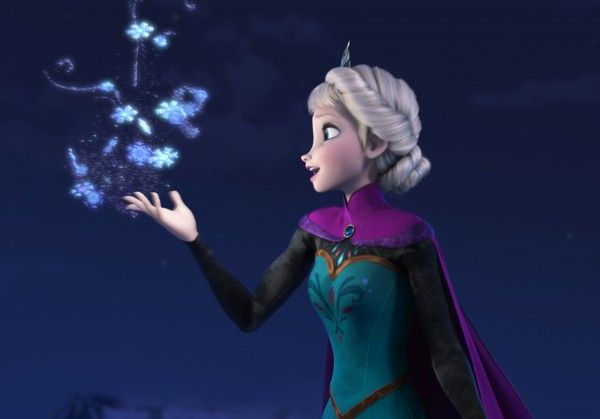
We also have editorial which works through and then there's production management. Product management is from beginning to end. They really carry the flick through and assist move those shots along through the process. So again, you'll run across all the crossover, front and back. Nosotros really have to work together. As the saying goes, information technology takes a village. Nosotros really believe that everyone in the studio is a filmmaker considering anybody is part of that process all throughout.
ROBERTS: Everyone gets notes on our films as nosotros become through the diverse screenings and iterations.
BUTTERS: That'due south fun because y'all get to tell the director and the producer what you thought of the movie in the stage that it'southward in. Yous can say, "I don't understand why this character would be motivated to practise this," and you go to send that right to the meridian of the chain. And they heed. They read every single note. Information technology's amazing. Ane thing I would likewise like to betoken out is that you lot don't do the story so move onto the animation. Story is working the unabridged movie.
ROBERTS: John Lasseter likes to use this old phrase where we say that none of our films are ever completed. They're merely released. If you put the power into our artists' hands, they would merely keep reworking it to try to brand things more and more perfect. But information technology but gets to a point where you have to release it to the public and hopefully they will bask it.
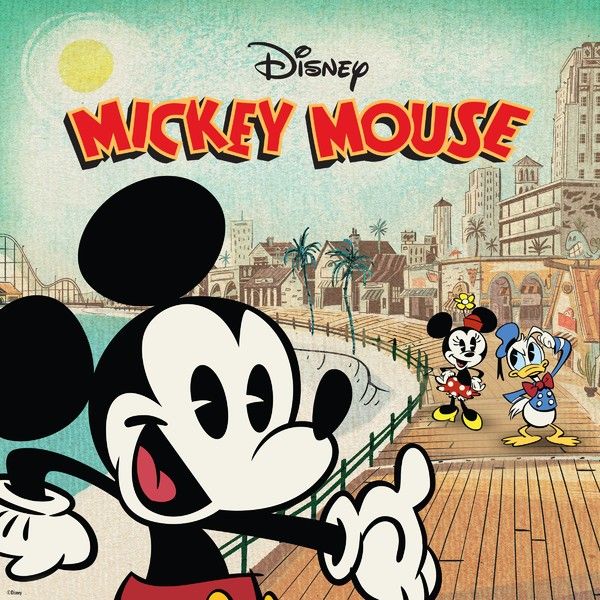
KEESLING: Creative roles for Disney Television Blitheness are a picayune bit different. As a recruiter for our studio, I'll have lot of people sometimes applying to me saying, "Oh, I want to exercise Vis-Dev, which is short for visual development. That'south a title that works more for you guys. You have a squad of Vis-Dev artists. For tv set, Vis-Dev is broken down into all of the little parts. Visual development would exist the fine art director, background designer, background painter, and color stylist. There'southward someone called a colour stylist on every evidence. They option all of the colors of everything that the background painter doesn't paint. And so, we likewise have storyboard artists and storyboard revisionists. I like to tell younger people, students, that if they're interested in story that doing storyboard revisions is a expert entry level task into Disney Television Animation. So, all of those roles are the ones that work for u.s.a.. It'southward designers and storyboard people. Then, at the helm, is the show creator and they're the ones that bring the vision to the tabular array. The show creators aren't necessarily the directors of their own shows, and that tin can exist kind of confusing to people. There are then many shows going on at any given time. We've got one that they're all the same pitching the boards and information technology'due south still on the thumbnails. And and then, nosotros've got some other ane where the story is more than fleshed out. Then, the testify creator oversees all of that, whereas there will be different directors. Each coiffure might have 2 or 3 directors that work on all the dissimilar episodes coming downwards. It'southward really fast paced, but it's a lot of fun and there'due south a lot of layering that happens on each coiffure. Hopefully, that's clear for y'all. There are a lot of similarities with how we work and then there are subtle differences.
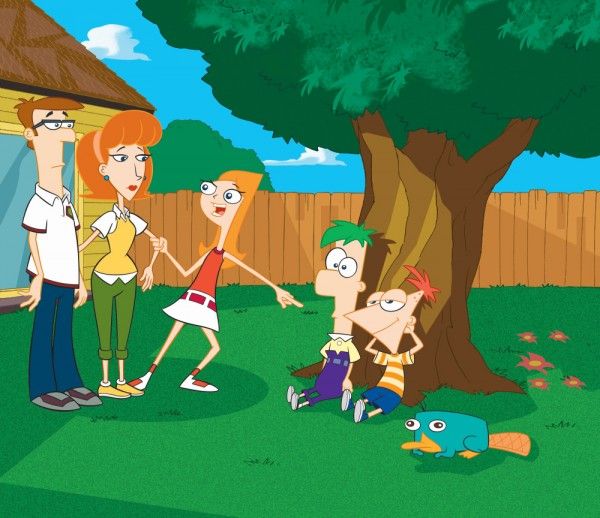
ROBERTS: Even stylistically when she's talking nigh story, for the story artists at our studio, we want you to work very roughly, very gesturally, considering you're doing a lot of iterations of a lot of same shots and scenes over and over as the pic develops. And then, we need y'all to piece of work apace but still with that really stiff sense of appeal, whereas in TV Animation, your story and revisions are a lot tighter.
KEESLING: Quick and dirty. They're super loose at first. They're little thumbnails on little post-its sometimes. And and so, as they become happier with the story, then they'll get information technology into a tighter place. What we are going towards is kind of a real tight final animatic which will then go to the animation department. 1 question that I often go is about writers. Nosotros don't tend to hire a ton of writers for TV animation because nearly of our shows are storyboard-driven, which means that the storyboard artists are likewise doing the writing. Nosotros have some shows that are script-driven, only the majority of them are storyboard-driven.
What's it similar to work at Disney Animation? KEESLING: It'south super fast paced but it's actually fun. Information technology's a slap-up place to work. The artists e'er get along really well. We're e'er feeding each other's creative juices. It's fast paced because there are so many episodes that need to exist made, and the schedules for episodes aren't that long. So, on that level, if yous similar the faster-paced surroundings, information technology'due south definitely a place where you would thrive. It'south super fun, very squad oriented.
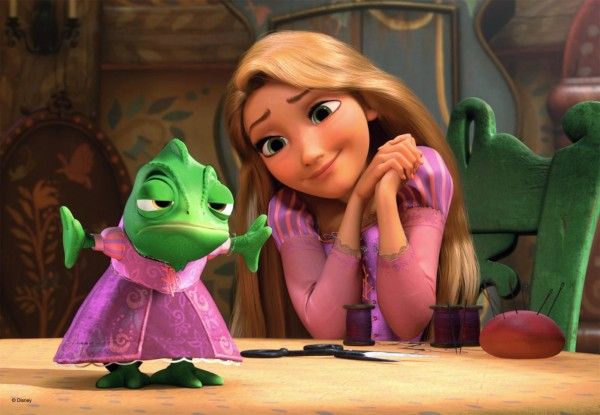
As the head of recruiting there, if I know that one person is going on hiatus from one show, like if we've got a storyboard artist that'southward going off from Wander, I'll say, "Hey, Gravity Falls, practice you guys need a storyboard artist right now?" We endeavor to keep our talent as much as possible and nosotros're very successful with that. We're super supportive and nosotros all experience that we're honored to be a function of the Disney Studio, the Disney environs. We've got a legacy to agree up. We need to stay true to the vision of the entire arrangement and we do our best to uphold that and have fun with it. That's part of the bargain of working for Disney. Plus we get to get to Disneyland, which we similar. So, there are many benefits to working at Disney. It's a really fun, family-oriented, wonderful company.
EDEN: I of the parts of our civilization is the legacy. We are currently on our 55th film, Zootopia, which we plan to release in Spring of side by side year. I'm really excited about that. We keep saying collaboration but it is true. It is a highly collaborative surround. Information technology's but part of the key. One special affair that is astonishing about the studio is that you do get to work with your peers and we learn from each other. We share. It'south a constant in everything that we practice. It is fun to work at Disney.
ROBERTS: What I really like about our studio is that there is very little ego. Anybody is there to make the all-time possible flick that they tin can. Nosotros're very, very proud of the success of Frozen and Big Hero half dozen, but we basically celebrate for a week, and so it'southward like nosotros take to make Zootopia every bit good as possible. And then, information technology's similar jumping back into the pipe to make sure that nosotros are doing everything nosotros can to piece of work together to requite audiences a really cracking pic.
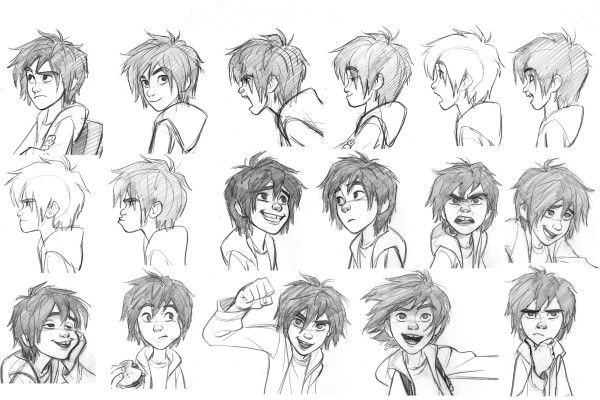
More and more, it's art and applied science working together. It'due south like both sides are inspiring each other these days, where technology says, "What tin nosotros do to actually make our art smooth in the CG realm?" At the same time, our artists are becoming more than and more comfortable coming to our engineers proverb, "This is an idea we have. Is there whatever way nosotros tin build a tool to make this easier for upcoming films?" With every film, we're trying not to echo ourselves. We really desire to give audiences a unlike feel. Nosotros really desire to push the art form and our filmmaking with each horse out of the gate. We're doing everything we can to keep you entertained. We capeesh you lot coming out to see our film.
BUTTERS: And just the fact that they're restructuring our building right now. Nosotros have new construction and it's all geared toward making us more collaborative, making information technology easier for us to be collaborative, and that'south exciting. Wherever y'all guys work, talk them into getting you a cereal bar. There are dispensers of cereal and you can walk down with a basin and fill up information technology up. They accept a fridge with every type of milk y'all can think of. That'south all frosting on the block.
ROBERTS: Nosotros have bagel Fridays where they have bagels out for everybody Friday morning. We have fresh fruits.
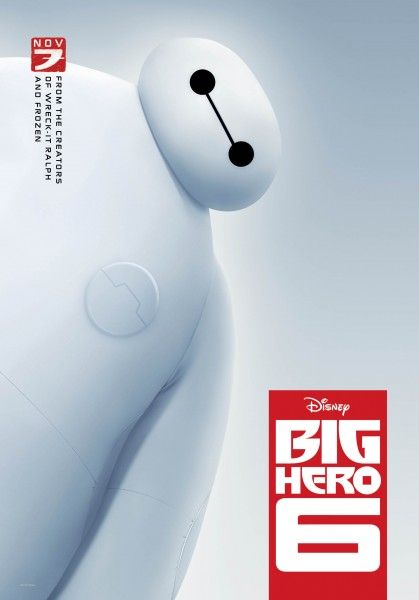
KEESLING: We have John Lasseter's hand-chosen chef at our commissary. It's for real.
ROBERTS: Our cereal is name brand. We're General Mills all the fashion.
BUTTERS: Permit'south open this up to the audience for Q&A. How do you work with other departments such every bit marketing or product merchandising?
EDEN: Marketing is part of Walt Disney Animation Studios. As Matt said, we're a vertical studio then we have our ain marketing section and our own finance section. They're all at the studio with us. They piece of work with a larger company, merely over again they're part of that pipeline through the procedure. They're there from the offset all the way through and beyond when the moving picture is released.
ROBERTS: We besides have a pretty newer function that'southward like an ambassador to our other divisions. When nosotros have consumer products and stuff coming out for our films or tie-ins to the theme parks, we have someone who works every bit a representative from our studio who goes to those divisions to oversee the quality of the merchandise that's going to be tied to a moving picture or whatsoever kind of theme that'due south going to be representing information technology. We want to make sure nosotros accept consistent creative quality representing our films.
Are yous planning on bringing any of the series that are on TV right now into a feature-length film?
ROBERTS: Unfortunately, we don't know. Where our creative civilisation is right now, our directors pitch original ideas within our studio. I remember we're very admirable in what each studio is doing.
KEESLING: The opposite is happening more correct at present. There are some things that I can't talk about, simply some things that they did earlier u.s.a. that now they might exist taking a step.
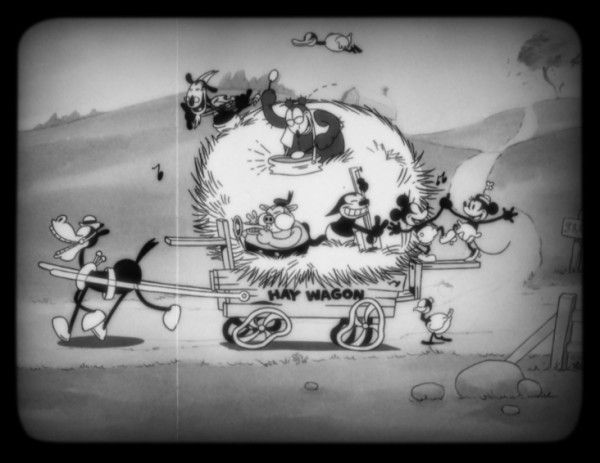
ROBERTS: The funny affair is, with the Mickey shorts, we did the Go a Horse curt at the same time Paul Ruddish was doing the Mickey shorts for them. It wasn't supposed to exist a tie-in. Information technology was just a coincidence. And then, equally each film was getting washed, I think the creators were getting together and proverb, "Oh, what are y'all doing?" and in that location was this mutual adoration between the directors that idea it was so cool that you guys are taking Mickey in this way.
What are some entry-level story positions that a contempo college graduate could apply for? What would you recommend for somebody who wants to get into story development and eventually tell stories with the Disney family unit?
KEESLING: For Television Animation, one thing that I look for in portfolios is I like to see people'south student films. If you become to a school that doesn't brand you lot make a picture show, then make yourself make a picture show, because we like to see your ability to tell a story. I also wait at graphic novels and comics, so that'due south something that I look for in portfolios. An entry-level job would be a storyboard revisionist, which is a person that cleans upwards the storyboard drawings that a seasoned storyboard artist would have fatigued. Applying for revisionist positions is a good way to go. We volition send out tests. If we're looking for a storyboard artist on a show or a storyboard revisionist, we tin transport out a storyboard test to you. You take to get your portfolio approved kickoff considering we don't want to send out a test willy nilly to hundreds of people. Simply if they encounter a glimmer of what they're looking for in their show, we'll send yous a test, and then y'all transport it back, and you might be the person who gets the job.
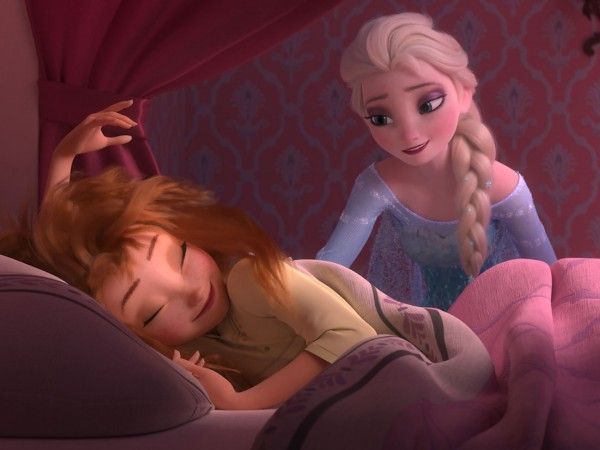
ROBERTS: For our studio, we actually have a motion-picture show evolution preparation program for story artists. We don't like to throw recent grads onto a picture show straightaway because it'southward very stressful on someone who'southward never worked on a film before. Our trainee program happens twice a year. The disciplines vary because nosotros attempt to anticipate what needs we're going to have downward the line and then nosotros're actually hoping to set y'all up for a job. It'south from 3 months to a 1-year-long paid mentorship where y'all're actually paired with a resident Disney creative person who's going to mentor you lot and evidence you lot the ropes and try to nurture your skills through that time to try to become yous set up to piece of work on a picture show. It's supposed to exist for grad students. It's designed for artists who are 0-iii years out of university, and then that is really the framework. Nosotros want you to be more on the junior side because we want to encounter the potential in you lot and we want to try to abound that into how our studio makes films.
How often does a position for a concept artist come upwards for television receiver animation?
KEESLING: Information technology's difficult to say how often. We're non on any strict schedule of seasons. Alive action is similar pilot season. We're year circular. We're green lighting things equally they become fresh and ready to green light. And then, I can't say how frequently. Similar I said earlier, nosotros don't utilize a concept artist. We don't look for a Vis-Dev creative person. We look for the very specific roles. So, I look for background painters. I wait for graphic symbol designs. We love to encounter actually strong draftsmanship and we like to see that y'all can do a variety of styles considering our shows all look different from each other.
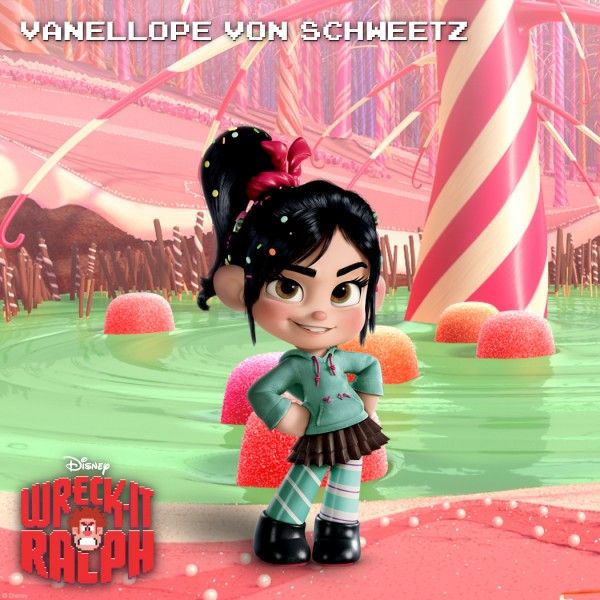
The manner my schoolhouse'south program is prepare, I have to make a choice between TV, motion-picture show, art and writing, only I want to practise it all. Which mode should I go?
KEESLING: You've got your whole life ahead of you. Don't let the downward pressure of the man, existence your schoolhouse, make you make up one's mind today. Don't permit them freak you lot out. Pick one and try it, and if that isn't the exact thing, merely realize you don't take to learn everything y'all need to know in school. Y'all're going to learn and then much once you become out and yous're working. Then, pick the thing that seems the closest to what yous think you desire to do. And if yous change your mind, you can alter your heed. It's a free state.
ROBERTS: When you get hired to a bigger studio similar us or Tv Animation, you tend to exist getting hired for one specific thing. It'southward not like yous're going to float everywhere, but having said that, I think it's good to have one specialty, like have a major, but and then maybe have a pocket-sized. Then if story is what you want to practice, like really put a lot of focus on story. Only if you're also interested in character pattern or something, I'd nevertheless say to develop those chops too, because if you take that versatility in both worlds, or even more than worlds than that, I call up you lot're making yourself more than marketable to the industry in general.
KEESLING: Try to get an internship while you lot're in school, because when you're a student and you lot're working in a studio, you lot'll beginning to see, "Oh, I idea I wanted to practise this, but really I want to do that."
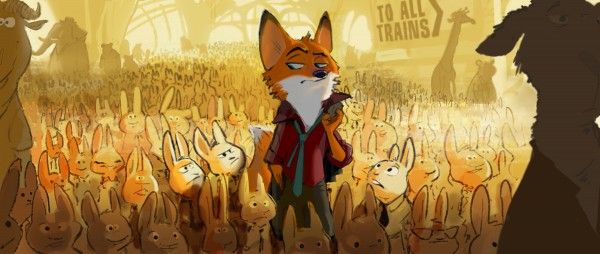
ROBERTS: Besides, when you are applying, you do want your portfolio to be every bit specific as possible, because if you accept as well many different disciplines all in one submission, it's going to confuse, unless you're awesome in all of them.
EDEN: When you start to go for internships, or once you lot graduate, know the civilisation of the place that you're applying to. Make sure that your portfolio is cogitating of that. If you lot're going for idiot box or feature animation or commercial, make sure that your portfolio reflects that.
KEESLING: I would say get your presence known. Post to your Tumblr constantly. I am constantly looking on Tumblr what people are posting. Go your stuff out in that location. Making student films, for television receiver, that helps us. (To Matt) I don't know if you guys look at it that much. That's something that I look at a lot.
ROBERTS: We totally practice. I think it's a really absurd time to be trying to get into the animation industry because you have the resources of the world at your fingertips today. It'due south not just that you take a multitude of studios out there, only there's always 'art of' books coming out. And so many industry professionals take their own Tumblrs or blogs or Instagrams. You tin can attain out and connect with artists. And if they feel comfortable and accept the permission from the studios to practise so, they can actually requite you lot feedback on your piece of work. You lot have so many benchmarks out there to make connections and get advice. I'd also say, whether yous're even so in schoolhouse or meeting people online, really surround yourself with a strong group of artists who you lot respect that aren't necessarily only going to tell y'all what you want to hear and that are going to claiming you and give yous honest feedback. If you're just at home working by yourself, y'all're kind of working in a vacuum. You lot could be making all the same mistakes over and once more. When y'all are with people that are going to challenge and back up you, you take someone to bounce ideas off of and you're going to grow. I was a decent artist when I was in community higher. The second I went to Cal State Fullerton and I was in that artistic community, I felt all of my skills just bumped upwards like they didn't earlier because I'grand in a community that is hither to brand me succeed.
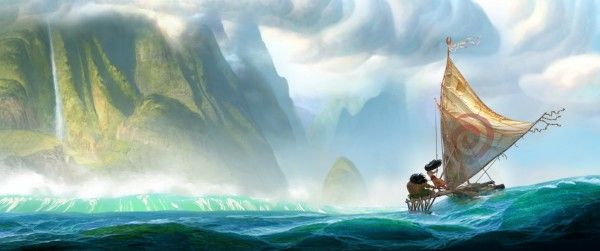
EDEN: Information technology goes back to what nosotros were saying before virtually a collaborative environs. Even though you lot've got seasoned people at our studio, they still will bounce ideas effectually. You recall you lot're washed, but then yous go in and yous share it with a group, and they might tear it autonomously and put it back together until you find that character or that piece of fine art. So, it'due south non just for students. Information technology's all throughout your career.
KEESLING: One other thing I'd say is be nice to each other in school, because if yous stay in animation, you're going to exist working together for years and years and years. I don't really dearest the discussion 'networking' considering it sounds like making fake friends that you're going to utilize for various things. But showtime building your genuine network. Help each other on your projects and join organizations. Women in Animation is ane. They practise mixers every month and yous can start coming together people. Go to WonderCon and all these things like volunteering at the Amy Awards. There are different means of starting to run into the people that you're going to be working with. BUTTERS: Here'south a huge tip in life, too. Exist honest. Seek people who are honest to tell yous whether this is terrible, or this is groovy, or this needs work on. Don't give false back up so that somebody is focusing their efforts on something that is a waste product of their time. Sam Harris has a great mini-book called Lying and it's all nigh this thing about not keeping people from reality. If y'all run into somebody and they inquire your stance on a piece of piece of work, tell them what you honestly think near it and what they honestly need to piece of work on. Don't evidence your mom. She'southward going to love you no thing what.
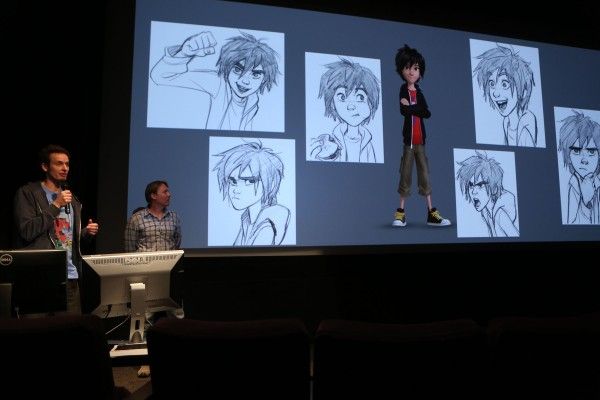
What portion of our portfolio should exist life cartoon, especially for people applying for positions in visual development, background, or story?
ROBERTS: For united states of america, I always say do two or iii pages at the back. Y'all don't demand to put that much, but we practise want to see your fundamentals. If you're a painter, nosotros'd as well similar to run across some of your paintings and studies on top of your bodily more artistic animation-driven work. Creature drawing is good. For those interested in story, it'southward also good to see your observational sketches. But we do want to know that you are observing from life and it'south not just cartoon from other designs. We want some kind of truth and authenticity backside anything that you build. Enquiry and going out there and studying the earth and people is really an important office of that.
EDEN: I merely need to see enough to know that y'all empathize book and shape and proportion. We don't need a ton. I tin can run into that in a portfolio that has no life cartoon if the character designs are really potent, simply information technology doesn't hurt to have some in in that location. Information technology just doesn't need to be a large assemblage.
I'm an animation educatee and I'1000 wondering what you look for in an intern?
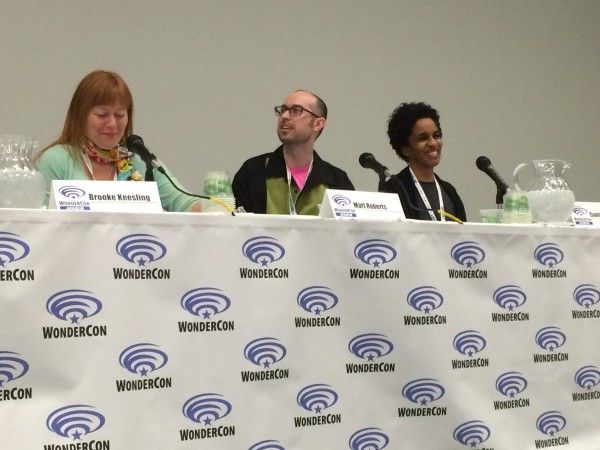
KEESLING: For u.s., we look at the portfolios. Nosotros really like to read the cover letters and hear about the passion that you have. Knowing that y'all know what our studio does is important. Sometimes you tin tell that someone has but applied to every internship under the lord's day and they ship you kind of a class letter that they've sent to every studio. We're definitely not looking for that, but for strength in your portfolio. Sometimes if people ship me a link to their Tumblr and they haven't updated it in a long time, I'm like, "Are they drawing a lot?" If I have to pick between two people and I see someone always adding stuff to theirs... I know you lot're in schoolhouse and y'all have a lot to do but… If it's Behance (online portfolio site) or Artimated, information technology doesn't actually affair. I was just using Tumblr as kind of a catch-all. That'south the one I seem to be seeing the most lately. Information technology's seeing that y'all are so engaged and that yous consume, slumber, live, and breathe cartoon and animation. And comics in your personal work, too. Not just things that you recollect are going to go you the chore. Nosotros desire to see your vision because yous might be the next evidence creator for us.
ROBERTS: If you lot want to utilize for a chore, it'south amend to have a divide Tumblr that's your portfolio, rather than submitting your personal Tumblr. I want to encounter your art, merely I don't retrieve I should be knowing this part about what'southward happening in your life. Just have something separate from that. For us, we actually have creative internships every summer that's meant for people who are nonetheless in school and will be going back to schoolhouse over again in the fall. Nosotros tend to just practice writing internships. We look for what nosotros look like in a pro, but more at a student level. We nevertheless want you to have a actually stiff sense of appeal and aesthetic and storytelling in anything you practise, merely we're looking more for potential. We know that an internship isn't going to immediately pb to a job. Nosotros simply want to come across if this person can benefit from learning under our artists for eight weeks. It'due south the same scale, simply but do your best and show us your absolute strongest piece of work.
I accept friends who use Toon Boom animation software to do artwork and storyboard. If I'm interested in a storyboard job, do I need to have those specific skills when I try to use?
KEESLING: For us, you don't. If we like your storytelling ability, like if we sent you a storyboard test and we thought this person nailed it and is cracking u.s. upwardly, yous could come in the studio and we could teach you about information technology. The ability to tell a story really well and clear and have all the elements that demand to exist in that working is more than of import. The applied science part can come later.
ROBERTS: Information technology'due south more than important to master the fundamentals and the concept of appeal and then piece of work on the tools from there. I think information technology will make you more marketable if yous know sure programs. For us, we have proprietary plug-ins, simply most of our software is off the shelf. If you're visual on the story, you're usually simply using photoshop in our studio. In something like for visual development, we only back up the artist's process. So, there are some people who still use more traditional media and and so they tin can scan all the artwork later. Just, it's about your piece of work first and tools 2nd, because tools are always going to change. Software is not going to stay the same over the course of even 5 to 10 years now.
KEESLING: Storytelling is ages onetime.
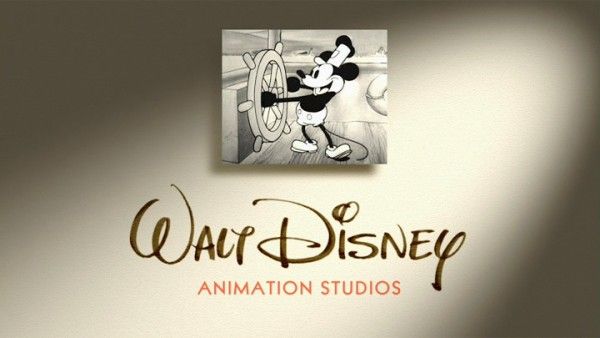
Source: https://collider.com/how-to-get-a-job-in-animation-at-walt-disney-studios/
Posted by: saulsfelf1971.blogspot.com

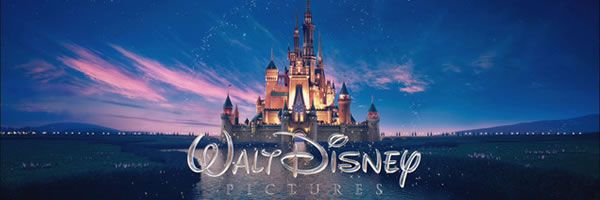
0 Response to "How To Work As A Disney Animator"
Post a Comment